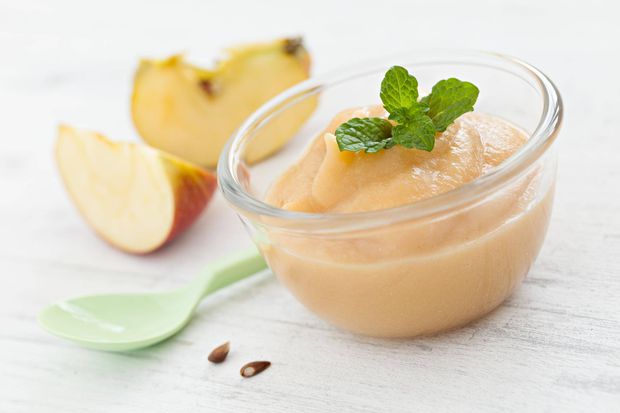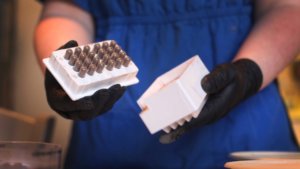
Should you be worried about the arsenic in your baby food?
Rice cereal is often a baby’s first solid food, but it contains relatively high amounts of arsenic, a source of growing concern. Now an advocacy group reports that while the levels of this potentially toxic substance in infant rice cereals have dropped slightly in recent years, rice cereals still contain six times more inorganic arsenic, on average, than infant cereals made with other grains like barley or oatmeal.
The new report comes from Healthy Babies Bright Futures, an alliance of scientists, nonprofit groups and private donors that aims to reduce children’s exposures to chemicals that may harm developing brains. One step parents can take immediately to reduce children’s exposure to arsenic is to feed infants cereals made with other grains, the group suggests.
“Parents have a lot of easy ways to reduce their babies’ exposure now because there are so many new cereal options on the market, many are fortified with iron that babies need, and many are just as affordable as rice cereal,” said Jane Houlihan, research director for Healthy Babies Bright Futures. The group also notes that many snacks contain rice.
Arsenic is ubiquitous in the environment and found in many foods, but rice plants are particularly efficient at drawing it in from the surrounding soil and water, experts say. High levels have been tied to cancers of the skin, liver, bladder and lungs. Newer research has linked long-term low-level exposures to cognitive and behavioral problems in children, though most babies currently eating rice cereals and rice foods do not show adverse effects.
“Infants are especially vulnerable because their bodies are so small, and on a per-pound basis, they’re getting much higher exposure than anyone else in the population,” Houlihan said. “They’re also vulnerable because it is a neurotoxic compound, and their brain is developing.”
For years, pediatricians have encouraged parents to introduce babies to a wide variety of grains in order to minimize exposure to arsenic. The Food and Drug Administration has proposed limits for the amount of inorganic arsenic allowed in infant baby cereals, but the agency has yet to finalize regulations. The Environmental Protection Agency limits inorganic arsenic in public drinking water, and the federal government also sets maximum permissible levels for eggs and some chicken, turkey and pork products.
The Healthy Babies Bright Futures alliance commissioned Brooks Applied Labs in Bothell, Washington, to test more than 100 samples of infant cereals, including 45 unique products made by nine different companies. The alliance’s report has not been published in a journal and has not been peer-reviewed, but is posted on its website.
The report found that overall, oatmeal, barley, buckwheat, organic quinoa, wheat and rice-free multigrain baby cereals contained much lower amounts of inorganic arsenic than rice cereals. In the six barley and buckwheat cereals tested, inorganic arsenic was present in such small amounts that it was either undetectable or the level had to be estimated, the report said. Some of the highest levels of inorganic arsenic were found in products made with brown rice, which tends to absorb more inorganic arsenic from the environment, experts say, though many nutritionists recommend adults choose brown rice over white because it is higher in fiber.
The new report notes that cereal makers have made progress at reducing inorganic arsenic in baby food products in recent years. The average level of arsenic in the rice cereals tested recently was 85 parts per billion, down from an average level of 103 parts per billion found by the FDA when it tested baby cereals in 2013 and 2014, according to the new report.
Several manufacturers said they have taken steps to find sources of rice that are low in arsenic, and some companies said they had discontinued items that did not adhere to the FDA’s proposed safety standards. Infant rice cereal accounts for 55 per cent of a baby’s total dietary exposure to arsenic, one study found. But some experts caution the less, the better.
“It’s just like lead: We don’t think there is a safe level,” said Margaret R. Karagas, an epidemiologist at the Geisel School of Medicine at Dartmouth who has studied arsenic. “It’s not an essential nutrient like zinc and selenium, which you need but can be toxic if you take too much – there’s no known benefit to arsenic exposure.”
“While waiting for the FDA to set standards for arsenic,” which may take a while, “it makes sense not to eat too much of it, meaning not much, not often,” said Marion Nestle, a professor of nutrition and food studies at New York University and book author. “What this comes down to, I think, is the most fundamental principle of good nutrition: Eat a variety of foods, not too much of any one thing.”
To reduce your family’s exposure to arsenic, the report suggests choosing a variety of grains including those low in arsenic. If a family member has celiac disease and must avoid gluten, read the ingredient labels carefully – rice flour is a common ingredient in gluten-free foods.
Cooking rice in excess water – using 6 to 10 parts water to 1 part rice – and draining the excess water off before consuming rice can reduce 40 to 60 per cent of the inorganic arsenic content, according to FDA research.
Be aware that many snacks and snack sweeteners, such as brown rice syrup, also contain rice.
Adults who eat brown rice for its high fiber content might consider other high-fiber grains like barley and oatmeal.
ISTOCKPHOTO
Original article at: https://beta.theglobeandmail.com/life/health-and-fitness/health/should-you-be-worried-about-the-arsenic-in-your-baby-food/article37301646/
To be sure ‘bad stuff’ is flashing off from your boy or that of your child there are wonderful products:
follow the link https://mineral-medix.com and you’d find out what is suitable for you.
Please consult your doctor or nutritionist before taking any supplements or medicine!








